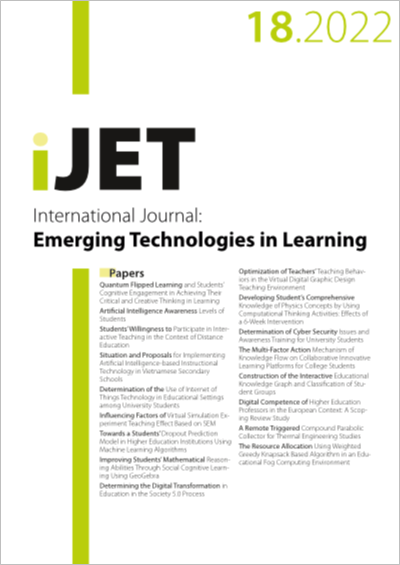Determination of the Use of Internet of Things Technology in Educational Settings among University Students
DOI:
https://doi.org/10.3991/ijet.v17i18.32185Keywords:
Keywords—Internet of things for university students, distanceAbstract
Internet concepts intended in this study were to determine the use of technology in educational environments, such as internet of things, among university students, which is a longitudinal distance education course of university students continued through the platform during the pandemic, given that it will become an advantage for them concerning the objects of Internet technology. It is seen that many methods are used in the study. Periodically, the study was prepared by applying it in the fall semester of 2021–2022. A total of 488 volunteer university students who are continuing their education participated in the study. In the study, 3-week online education was provided to university students. In the study, the ‘Internet of Things’ measurement tool developed by the researchers and compiled by experts in the field was sent to the students. The data collection tool used in the study was delivered to the students participating in the study by online method and then collected. The analysis of data was carried out using SPSS programme, frequency analysis and t-test. The results obtained were added to the study accompanied by tables and comments. At the end of the study, it was concluded that the students participating in the study had a high use of internet of things technology in the educational environment.
Downloads
Published
How to Cite
Issue
Section
License
Copyright (c) 2022 Ilyas Yessengabylov , Aldabergenova Aigul , Rysgul Tasbolatova , Mukazhzanov Yerkat , Khaimuldanov Yerlan , Gulnara Issayeva

This work is licensed under a Creative Commons Attribution 4.0 International License.


